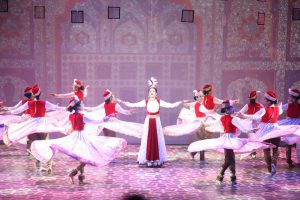Haroun and the Sea of Stories – A fantastic tribute to a son.
I was introduced to Salman Rushdie in 1981 via his second novel Midnight’s Children and recall mistaking it for a children’s book. After 7 years in 1988, I heard that Salman Rushdie had written another novel called Satanic Verses and the President of Iran had issued a fatwa, calling for Rushdie’s head. Apparently, the author had written some stuff that hurt the religious sentiments of some people, and as such Rushdie was condemned and judgment passed for that ‘crime’. Rushdie went into hiding for a few lines he had written, and his life was never the same again. I longed to read the book, but I think it was banned in India at that time.
 Years later, when I chanced upon a slim volume of his book Haroun and the Sea of Stories, I picked it up mistakenly thinking that it was a book of Short Stories. It turned out to be a book that Rushdie had apparently written for his 9-year-old son, Zafar whom he used to narrate bedtime stories to. I guess he realized that the made-up stories were quite amazing, and he decided to write the novel incorporating all the elements of a bedtime story and much more!
Years later, when I chanced upon a slim volume of his book Haroun and the Sea of Stories, I picked it up mistakenly thinking that it was a book of Short Stories. It turned out to be a book that Rushdie had apparently written for his 9-year-old son, Zafar whom he used to narrate bedtime stories to. I guess he realized that the made-up stories were quite amazing, and he decided to write the novel incorporating all the elements of a bedtime story and much more!
The novel starts off with an adorable dedication from Dad Rushdie to Son Rushdie:
Z embla, Zenda Xanadu
A ll our dream-worlds may come true.
F airy lands are fearsome too.
A s I wander far from view
R ead, and bring me home to you.
Fairy lands are fearsome too, warns Rushdie and goes on to prove just that with this book.
The story is quite simple. Young Haroun’s Dad Rashid Khalifa is a story teller who lives in a sad city(everyone who lives here apparently has sadness engulfing them and their lives). He brings cheerfulness to the city by making up extraordinary stories and narrating them to it’s inhabitants, diminishing their sadness for a short time. For this reason he is pretty famous in the city and is almost always center stage narrating his fantastic stories. He lives with his wife Soraya and son Haroun. Everything seems hunky dory in the Khalifa household and little Haroun is happy as a lark in the sad city. However, unbeknownst to him and his father, his mother gives in to the sadness of the city and decides that she’s had enough of the Khalifa men and runs away with their neighbor Mr.Sengupta leaving behind a letter where she explains that she prefers his unimaginative reality to her husband’s imaginary make-believe world. After that incident Rashid is unable to weave stories anymore. He goes from being the ‘Shah of Blah’ and ‘Ocean of Notions’ to being unable to proceed beyond – “Ark!Ark!Ark!”
A pretty sad tale till this point in time it looks like. I thought it would be a mop fest from this point onwards with the child blaming himself and the father falling into a depression. But then, you are suddenly plunged into a land of fantasy and imagination as Haroun chances upon a water genie who has come to cut the supply of stories to Rashid. I re-read the part again to make sure that it was a genie and not a technician from the cable company that Haroun chanced upon! You see, I am not a very big fan of Sci-Fi or Fantasy fiction. I like realism and stick mostly with memoirs and realistic fiction. But I really wanted to finish my first Rushdie novel and continued reading. Am I glad I did!
Haroun blames himself for his dad’s misfortune and decides to help his dad out of the predicament. The story proceeds as he comes to know from the water genie Iff, that Rashid has unsubscribed from their service and the genie had come to take care of the cancellation. From then onwards, we are treated to a fantastic spectacle as Haroun takes a trip to the Land of Gup and the Land of Chup to clear the error of being unsubscribed from the Sea of Stories. The choice to name the lands with Gup (conversation) and Chup(silence) seemed like pure genius to me. No wonder Rushdie is considered a genius, because he is!
Haroun is taken to the land of Gup where all stories originate. There are the seas around the island of Gup. But we have the land of Chup whose leader Khattam-Shud (The End, nothing but the End) is hell bent on destroying the sea of stories – the sea of stories from where storytellers get their goods from. Quite a neat concept, right? I was enthralled by this book. Though it is targeted towards children as young as 9, there are many, many layers to this book. There’s politics, there’s indirect references to the fatwa, there’s philosophy so deep that I had to take a couple of minutes for it to absorb in my psyche. Consider for example the following:
“Haroun was Lucky; but luck has a way of running out without the slightest warning. One minute you’ve got a lucky star watching over you and the next instant it’s done a bunk.”
This to me represents Rushdie’s life before and after the Fatwa. I can imagine the red carpet being pulled off your legs as you are getting ready to receive your award.
There are also references to the modern world which I find applicable even in 2017. I firmly believe that some writers can foretell future, Rushdie seems to me to be one of them when he writes in the book that came out in 1988 –
“In the sad city, people mostly had big families; but the poor children got sick and starved, while the rich kids overate and quarreled over their parents’ money.”
Rushdie manages to keep the story very interesting and the flow rapid by incorporating humor and introducing unique and likable characters with regularity. The characters include a mechanical bird called Butt, who Haroun picks to be flown to the land of Gup with Iff the water genie. So basically, Iff and Butt are Haroun’s companions. I am sure the children would find that quite enthralling.
There’s a horde of lovable and not so lovable characters in the book who keep on making appearances and disappearances. One of them is Bolo, the Prince of Gup land. He is a young man who is in love with Princess Batcheat, who had managed to get herself kidnapped by Khatam-Shud. He is quite comical and stupid and does not hesitate to lead his people to war for his own selfish purpose. He reminds me of our leaders today, especially one who do it for far less honorable things than love. I leave it to your imagination to figure out who Rushdie might have been referring to so many years ago as he writes –
“What’s that you say?” shouted Bolo, leaping to his feet and striking a dashing and slightly foolish pose. “Why have you waited so long to tell us? Zounds! Proceed; for pity’s sake, proceed” (When Bolo spoke like this, the other Dignitaries all looked vaguely embarrassed and averted their eyes).
Continuing in the vein of addressing today’s issues, Rushdie does touch briefly on the concept of women’s issues as he writes –
“You think it’s easy for a girl to get a job like this? Don’t you know girls have to fool people every day of their lives if they wanted to get anywhere?”
That’s the heroine of the novel Blabbermouth who disguises herself as a man to join the army of pages of Gup land. She delivers some brilliant lines during which Haroun develops a crush for her. Lines such as:
“You think a place has to be miserable and dull as ditch water before you believe it’s real?”
There is dissent in the army of pages when war is declared against Chupwalas to rescue Batcheat. The Gupees are quite relieved that Princess Batcheat is not around to bother them with her continuous talk and worse still, her signing. They grumble among themselves as to why Prince Bolo must rescue Batcheat and Mali the gardener who helps Haroun says –
“It (the reason) is Love. It is all for Love. Which is a very wonderful and dashing matter. But which can also be a very foolish thing.”
The book is not however, relegated to only fantasies and dashing characters. A good writer not only piques and exercises your emotion, but also makes you think and Rushdie manages to do that quite wonderfully even in a book meant for young kids.
It is interesting how Rushdie tackles Khattam-Shud, the villain in the story. His description shows what sort of contempt the author held for attempts to silence him. I wish political leaders, dictators, presidents, CEOs etc. do not pick fights with writers because the writers can do much more with their words than these powerful people can do with their power.
Rushdie describes Khatam-Shud as –
“He is the Arch-Enemy of all Stories, even of Language itself. He is the prince of Silence and the Foe of Speech.”
Khatam-Shud never makes an appearance until towards the end of the story, but his brooding presence is felt in every page. It is like he is hidden between each page you turn. One builds up this image of him being magnificently and monstrously menacing. But it is an anti-climax when the cult master as he is referred to makes an appearance. In his first meeting with Khatam-Shud Haroun’s thoughts are as follows –
“That’s him? That’s him?” Haroun thought, with a kind of disappointment. “This little mingling fellow? What an anti-climax.”
Haroun asks Khatam-Shud why he is trying to take the fun out of the world by trying to put an end to story-telling. The reply he gets is haunting.
“The world, however, is not for Fun. The world is for controlling. Your world, my world, all worlds. They are all there to be Ruled. And inside every single story, inside every Stream in the Ocean, there lies a world, a story-world that I cannot Rule at all. And that is the reason why.”
Rushdie intersperses these strong and profound statements with some flippant ones to keep the pretense of this being a children’s book going. For instance, there’s stuff like
P2C2E – Process to complicated to explain, which is used generously in the book.
Dull Lake – Reference to Dal Lake in Koch-Mar (play on the word Kashmir) which apparently means nightmare in local language!
A poster is support of candidate Buttoo that goes something like
“WHO’S THE ONE FOR YOU? – NOT JUST ONE, BUTTOO!’
I can imagine the children going into peals of laughter at things like these though they might have glazed over at some of the things earlier. And a child’s laughter is one of the better things about the world and Rushdie manages to bring that out a lot with this book.
I loved the book. I loved how Rushdie used some words from the Hindi Language to cleverly bring out the intrinsic peculiarities of his characters. I loved the pace of the book which sometimes left you breathless and overwhelmed with its huge repertoire of characters and its speed. But as Rushdie says:
‘Speed, most Necessary of Qualities! In any Emergency – fire, auto, marine – what is required above all things? Of course, Speed.’
I would recommend everyone to read this book. It is wonderfully descriptive and manages to draw a picture of the fantasy land with its Plentimaw (Plenty Mouth) fishes, pure blue sea of stories polluted by dark viscous liquid manufactured in Chupland, Mudra the Shadow Warrior and of course the lovable amongst them all, the heroic son Haroun. I would highly recommend the book for the simple but evocative language throughout the novel. But I would mostly recommend it for you to understand the genius of Salman Rushdie without the aid of a Midnight’s Children or The Satanic verses. It is also wonderful that Rushdie borrows heavily from Hindi to name almost everything in the book and I loved the play of the words. Each time a new character or place was introduced, it would bring a smile to my lips.
The real reason however I would exhort you to read the book is to understand that there are many ways of telling a story. Rushdie does not resort to maudlin tales to bring across the bond between a father and his son. Even though the foundation is built on a shaky start, he demonstrates that a fantasy tale can build emotions and sentimentality without the help of drama and tears. I particularly got misty eyed, every time that Rashid discovers that Haroun is going above and beyond the duties of a son and says to him whenever he finds him helping out bravely in a precarious situation:
“Young Haroun. You surely are the most unexpected of boys!”
What a wonderful tribute from Rushdie to his son. Truly, remarkable.



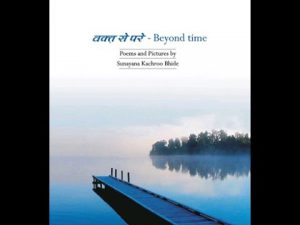
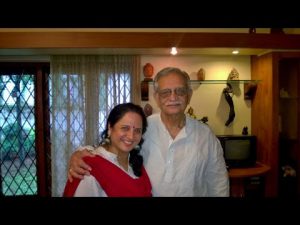
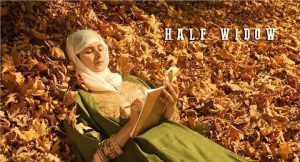
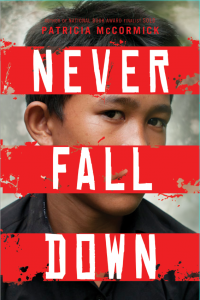
 The uniqueness of McCormick’s narrative lies in her implementation of the techniques of literary journalism and research. While she follows multiple situations, she eventually consolidates them all in her stories. She does it in ‘SOLD’, where she frames a composite character based on the bits and pieces of research collected from the individual stories of the girls she interviewed. Through the narrative of ‘SOLD’, McCormick seeks to break the taboo and unfold the history behind the blemished identities of the girls victimized by sex trafficking. In writing the book, her goal has been to “outrage the dream readers of the book” to the extent that they would desperately look to get involved in rescuing and rehabilitating those hapless girls. McCormick’s fiction largely revolves around some of the most gripping stories of terror, abuse, vulnerability and survival of the protagonists. It is the magic of narrating these gruesome tales with the precision of language, the minute details of research, that draws the readers to the books. The narratives in her fiction primarily focus on the young adults as her principal readers. For example, the narratives in her fiction, including ‘Never Fall Down’, ‘SOLD’, ‘Purple Heart’ and ‘CUT’ are often the narratives of young people, used as innocent frames of reference. It is the terror and vulnerability of these young voices as well as their ultimate strength to fight back their precarious situations that stimulate her as a writer.
The uniqueness of McCormick’s narrative lies in her implementation of the techniques of literary journalism and research. While she follows multiple situations, she eventually consolidates them all in her stories. She does it in ‘SOLD’, where she frames a composite character based on the bits and pieces of research collected from the individual stories of the girls she interviewed. Through the narrative of ‘SOLD’, McCormick seeks to break the taboo and unfold the history behind the blemished identities of the girls victimized by sex trafficking. In writing the book, her goal has been to “outrage the dream readers of the book” to the extent that they would desperately look to get involved in rescuing and rehabilitating those hapless girls. McCormick’s fiction largely revolves around some of the most gripping stories of terror, abuse, vulnerability and survival of the protagonists. It is the magic of narrating these gruesome tales with the precision of language, the minute details of research, that draws the readers to the books. The narratives in her fiction primarily focus on the young adults as her principal readers. For example, the narratives in her fiction, including ‘Never Fall Down’, ‘SOLD’, ‘Purple Heart’ and ‘CUT’ are often the narratives of young people, used as innocent frames of reference. It is the terror and vulnerability of these young voices as well as their ultimate strength to fight back their precarious situations that stimulate her as a writer.